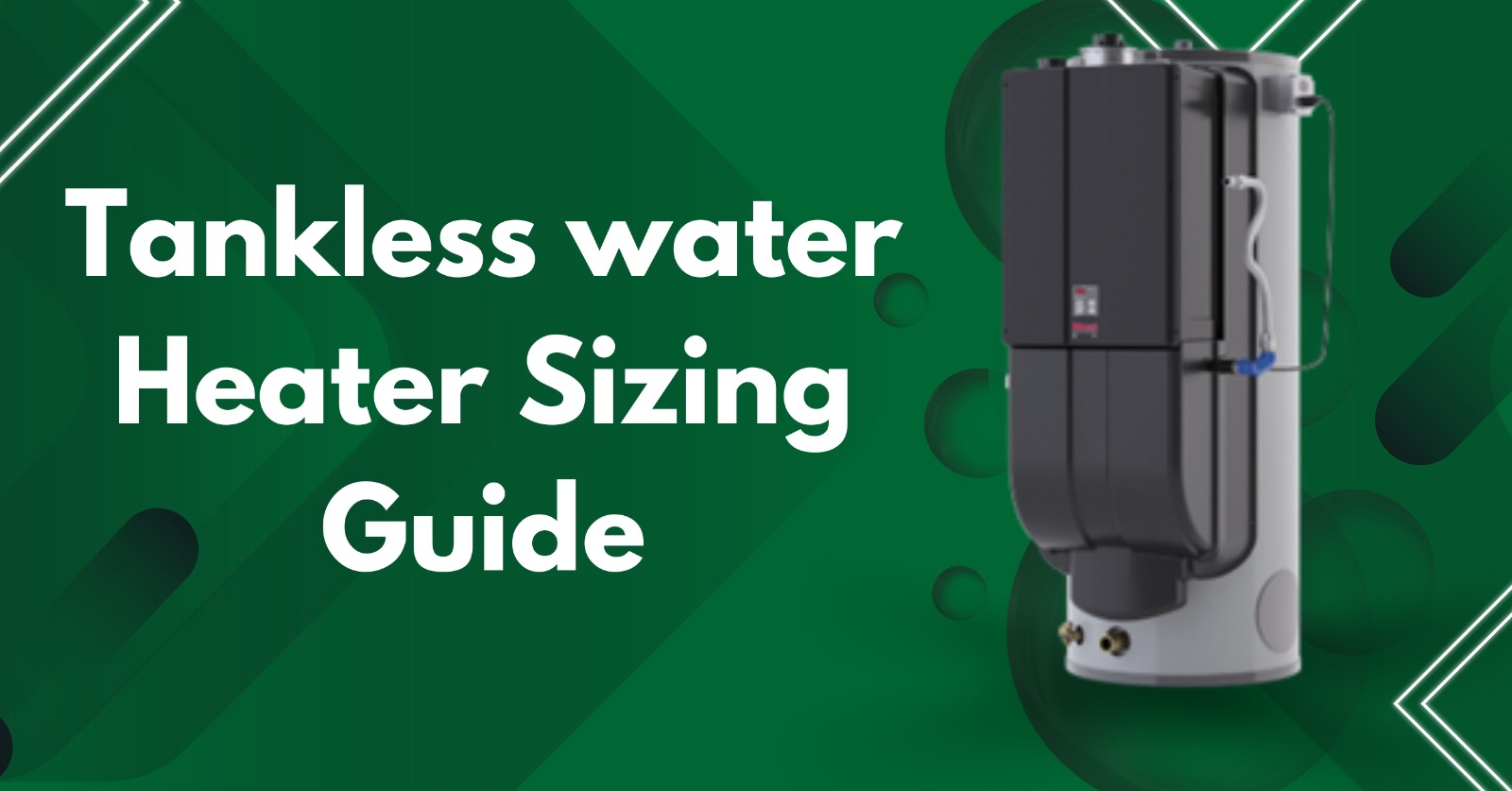Tankless Water Heater Sizing Guide

Switching to a tankless water heater can be a game-changer for your home's energy efficiency and comfort. Unlike traditional water heaters, tankless systems provide hot water on demand, eliminating the need for a bulky storage tank and reducing energy waste. However, choosing the right size tankless water heater is crucial to ensure optimal performance and efficiency. In this guide, we'll walk you through the steps to correctly size a tankless water heater for your home.
Why Size Matters
Choosing the correct size tankless water heater is crucial for ensuring adequate hot water supply without wasting energy or money. A unit that's too small won't be able to meet your household's demand, leading to cold showers and frustration. On the other hand, a unit that's too large will consume more energy than necessary, driving up your utility bills.
Determine Your Peak Demand
The first step in sizing a tankless water heater is to calculate your peak hot water demand. Consider the following factors:
Number of fixtures: Count the number of showers, sinks, dishwashers, washing machines, and other appliances that require hot water.
Flow rate: Determine the flow rate (in gallons per minute, GPM) of each fixture. This information can typically be found in the product specifications or by using a flow rate calculator.
Temperature rise: Calculate the temperature rise needed to reach your desired hot water temperature. This is the difference between the incoming cold-water temperature and your desired hot water temperature. For example, if the incoming water temperature is 50°F and you want your hot water at 120°F, the temperature rise is 70°F.
Choosing the Right Size
Once you've determined your peak hot water demand, use the following guidelines to select the appropriate size tankless water heater:
Flow rate: Choose a tankless water heater with a flow rate that meets or exceeds your peak hot water demand. It's essential to consider simultaneous usage—for example, running a shower while the dishwasher is running.
Temperature rise: Ensure the tankless water heater you choose can achieve the necessary temperature rise to deliver hot water at the desired temperature.
Unit size: Tankless water heaters are available in various sizes, typically measured in gallons per minute (GPM). Select a unit size that aligns with your household's peak demand without being oversized.
Additional Considerations
Climate: If you live in a colder climate where the incoming water temperature is lower, you'll need a tankless water heater with a higher temperature rise capability.
Future needs: Consider any potential changes in your household's hot water usage, such as additional family members or renovations that may add fixtures.
Energy efficiency: Look for ENERGY STAR certified tankless water heaters, which are more energy-efficient and may qualify for rebates or incentives.
Conclusion
Choosing the right size tankless water heater is essential for ensuring a steady supply of hot water while maximizing energy efficiency. By calculating your peak hot water demand and considering factors like flow rate and temperature rise, you can select a unit that meets your household's needs without wasting energy or money. Invest in a tankless water heater today and enjoy endless hot water whenever you need it.

